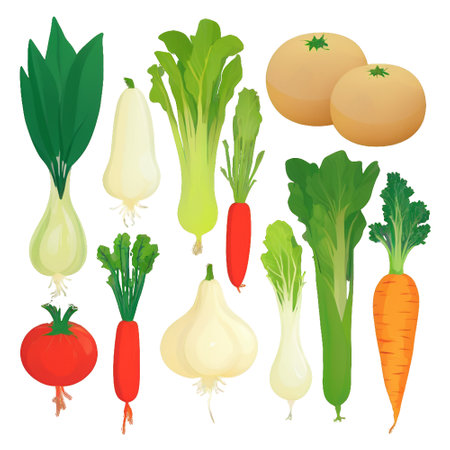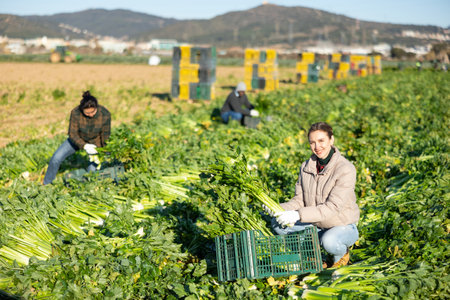Introduction to Polyculture and Companion Planting in the UK Context
Polyculture and companion planting are time-honoured cultivation methods that have gained renewed significance among UK allotment holders seeking sustainable, productive, and resilient growing spaces. In essence, polyculture refers to the practice of cultivating multiple plant species together, as opposed to the conventional monoculture approach. Companion planting, a subset of polyculture, involves strategically placing specific plant species in proximity to one another based on their mutual benefits—such as pest control, enhanced growth, or improved flavour. These techniques are deeply intertwined with British horticultural tradition, with historical records of Victorian gardeners employing mixed planting schemes to optimise yield and mitigate risks posed by pests and diseases. Allotments, a longstanding feature of British urban and suburban life since the 19th century, offer an ideal context for these approaches. The limited space available on most plots encourages innovation and efficient use of resources, making polyculture and companion planting particularly relevant. As modern allotmenteers increasingly prioritise ecological gardening practices and food security, revisiting these heritage methods is both a nod to the past and a practical response to present-day challenges.
Benefits of Polyculture and Companion Planting on Allotments
Polyculture and companion planting offer a suite of advantages for UK allotment holders, extending well beyond increased yields. These traditional and innovative practices enhance plot productivity, promote ecological balance, and foster a greater sense of community among growers. Below is an in-depth analysis of the main benefits these methods provide within the unique context of British allotments.
Productivity Gains
By cultivating a variety of crops together, polyculture optimises space utilisation—a crucial consideration given the limited size of most UK allotment plots. This diversity often results in higher overall yields compared to monoculture systems, as different plant species occupy varying ecological niches above and below ground. Companion planting further supports this by selecting combinations where one crop supports another, such as beans fixing nitrogen for leafy greens or tall sunflowers providing shade for lettuce during warmer months.
| Polyculture/Companion Method | Productivity Impact | Example on UK Allotment |
|---|---|---|
| Three Sisters (sweetcorn, beans, squash) | Maximises vertical and horizontal space; beans enrich soil | Traditional beds in Midlands allotments |
| Carrots with onions/leeks | Reduces pest pressure; improves carrot growth | Common in Southern England plots |
| Interplanting brassicas with nasturtiums | Lures aphids away from crops; increases pollinators | Widespread across urban London sites |
Ecological Benefits
The integration of different plants enhances biodiversity, which naturally suppresses pests and diseases—a growing concern for UK gardeners facing evolving climate conditions. Increased plant diversity also attracts beneficial insects such as ladybirds and hoverflies, which act as natural predators to common pests. Furthermore, varied root structures improve soil structure and health by fostering beneficial microbial life, reducing the need for artificial fertilisers and pesticides.
Pest Control Synergy
A well-planned mix of companion plants can break pest cycles without chemical intervention. For example, marigolds deter whitefly when planted among tomatoes, while alliums repel carrot root fly. These time-honoured techniques are especially valued on organic-certified allotment sites where chemical use is restricted.
Community and Social Advantages
The adoption of polyculture and companion planting encourages knowledge sharing and collaboration among allotment holders. Plot neighbours often exchange seeds, cuttings, or advice regarding successful plant pairings suited to local conditions—strengthening social bonds across diverse communities. Additionally, visually appealing mixed plantings create more vibrant communal spaces that inspire engagement from both experienced growers and newcomers alike.

3. Popular Polyculture and Companion Planting Combinations for UK Conditions
When implementing polyculture and companion planting on UK allotments, choosing plant combinations that thrive in the British climate is essential for maximising productivity and resilience. Here are some practical examples of time-tested pairings and groupings suited to traditional UK crops.
The Three Sisters Adapted for the UK
Although the classic “Three Sisters” combination—sweetcorn, climbing beans, and squash—originates from Native American practice, it can be successfully adapted for southern parts of the UK during warmer seasons. Sweetcorn provides a living support for beans, while squash acts as a ground cover to suppress weeds and retain moisture. In cooler regions, consider substituting French beans or runner beans and using courgettes or pumpkins as the ground cover component.
Carrot and Onion: A Classic British Duo
One of the most popular companion planting strategies on UK allotments is interplanting carrots with onions (or other alliums such as leeks). The scent of onions helps deter carrot root fly, while carrots can discourage onion fly. This mutually beneficial pairing not only improves yields but also reduces pest damage without reliance on chemical controls.
Cabbage Family Partnerships
Brassicas—such as cabbage, broccoli, and Brussels sprouts—are staple crops on many British plots but are prone to pests like cabbage white butterflies. Traditional companions include aromatic herbs such as sage or thyme, which help mask the scent of brassicas and deter insect pests. Additionally, planting nasturtiums nearby acts as a sacrificial crop, attracting aphids away from your main harvest.
Legumes and Potatoes: Soil-Boosting Allies
Planting broad beans or peas alongside early potatoes is another productive combination suited to the UK’s temperate conditions. Legumes fix atmospheric nitrogen into the soil, benefiting the nutrient-hungry potatoes that follow in rotation. This grouping also takes advantage of staggered harvesting times, making efficient use of limited space.
Lettuce Under Brassicas
Lettuce thrives in partial shade provided by taller brassica plants later in summer. This not only conserves soil moisture but also prevents lettuce from bolting during hot spells—a frequent challenge in southern England allotments.
By drawing upon these proven plant partnerships, UK allotmenteers can create diverse, resilient systems that naturally enhance productivity while reducing reliance on synthetic inputs. Experimentation with traditional and innovative combinations will further refine what works best for your unique microclimate.
4. Planning and Implementing Polyculture Systems on Allotments
Designing a productive polyculture system for a UK allotment requires careful planning to maximise space, improve yields, and enhance resilience against pests and diseases. The following step-by-step guide is tailored to the typical layout and conditions found across British allotment sites.
Step 1: Assess Your Allotment Plot
Begin by evaluating your site’s dimensions, aspect, soil type, drainage, and existing structures (such as sheds or paths). Note any areas prone to shade or waterlogging, as these will influence crop selection and placement.
Step 2: Set Objectives and Prioritise Crops
Decide on your key goals—whether it’s year-round harvests, reducing pest impact, or supporting pollinators. List the crops you most wish to grow, prioritising those suited to the UK climate and your personal preferences.
Step 3: Design Planting Schemes Using Polyculture Principles
Map out complementary plant groupings using companion planting knowledge. Consider crop families, root depths, growth habits, and nutrient needs. Common approaches include mixing legumes with brassicas for nitrogen-fixing benefits or interplanting fast-maturing salads among slower-growing root vegetables.
| Crop Type | Companion Options | Key Benefits |
|---|---|---|
| Tomatoes | Basil, marigold | Pest deterrence, flavour enhancement |
| Carrots | Onions, leeks | Pest confusion (carrot fly/onion fly) |
| Cabbages | Dill, nasturtium | Pest attraction away from crops |
Step 4: Plan Succession and Crop Rotation
Create a rotation schedule to prevent nutrient depletion and reduce disease risk. Use traditional British systems such as the three- or four-bed rotation method. Factor in sowing and harvesting times for continuous productivity.
Step 5: Prepare Beds and Pathways
Organise beds for easy access—standard UK plot sizes lend themselves well to raised beds or defined rows. Mulch pathways with woodchip or grass clippings to suppress weeds and retain moisture.
Implementation Checklist
- Test soil pH and amend as needed
- Sow green manures over winter to improve fertility
- Position perennials at plot edges for structure and wildlife habitat
Cultural Considerations for UK Gardeners
Select varieties proven in local conditions—consult fellow plot holders or the Royal Horticultural Society for recommendations. Embrace traditional British companion pairings while trialling new combinations to suit your tastes.
5. Challenges and Considerations in the British Allotment Landscape
Implementing polyculture and companion planting on UK allotments brings significant potential for productivity, but it is not without its unique set of challenges. The British allotment landscape presents a range of obstacles that plot holders must navigate to achieve successful outcomes.
Soil Types and Preparation
UK allotments are characterised by diverse soil types, from heavy clay to sandy loam, each with distinct nutrient profiles and drainage capacities. Understanding the local soil composition is essential before adopting complex planting systems. Clay soils, common in many parts of England, can hinder root development and water management, while sandy soils may require increased organic matter to retain nutrients for multiple crops. Soil testing and appropriate amendments such as compost or well-rotted manure are crucial steps in preparing beds for polyculture and companion planting.
Pests and Disease Management
The relatively mild and damp British climate encourages a range of pests and diseases, including slugs, snails, aphids, and fungal infections like blight. While polyculture can reduce monoculture-related outbreaks, it does not eliminate pest pressures entirely. Companion plants such as marigolds and nasturtiums may help deter some pests, yet persistent monitoring and integrated pest management (IPM) strategies remain necessary. Netting, physical barriers, and biological controls should be considered part of a comprehensive approach.
Unpredictable Weather Patterns
British weather is notoriously unpredictable, with periods of drought followed by heavy rainfall even within the same growing season. These fluctuations can complicate the careful planning required for mixed-cropping systems. Frosts in spring or autumn may damage tender companion species, while extended wet spells can increase susceptibility to rot and mildew. Plot holders must remain flexible, employing protective measures such as cloches or fleece when necessary and adjusting sowing times to align with local microclimates.
Allotment Regulations and Community Standards
Many UK allotments operate under council or association guidelines that dictate acceptable practices regarding plot maintenance, crop selection, and even the appearance of plantings. Some regulations may inadvertently restrict certain polyculture methods—for example, limits on permanent structures or the cultivation of perennial species. It is vital for gardeners to familiarise themselves with these rules to avoid conflicts with site managers or neighbouring plot holders. Open communication within the allotment community can facilitate knowledge sharing and encourage broader acceptance of innovative planting schemes.
Conclusion: Strategic Planning is Key
Successfully integrating polyculture and companion planting on British allotments demands a strategic approach that accounts for environmental variables, regulatory frameworks, and communal expectations. By proactively addressing these considerations—through thorough soil preparation, adaptive pest control measures, responsive weather planning, and respect for local regulations—gardeners can maximise productivity while contributing positively to their allotment communities.
6. Case Studies and Success Stories from UK Allotment Holders
Polyculture and companion planting are not just theoretical concepts; they are practical strategies being successfully adopted by allotment holders across the UK. Real-world examples demonstrate how these approaches can transform productivity, biodiversity, and resilience on local plots. Below, we explore a selection of case studies that highlight the tangible benefits and lessons learnt by gardeners who have embraced these methods.
Case Study 1: The Community Plot in Sheffield
In Sheffield, a group of allotment enthusiasts decided to overhaul their traditional monoculture beds in favour of a polyculture approach. By interplanting sweetcorn, climbing beans, and courgettes—reminiscent of the ‘Three Sisters’ system—they observed improved yields and healthier plants. The sweetcorn provided natural support for beans, while the courgettes shaded the soil, reducing moisture loss and weed pressure. Their advice: “Start small with one or two companion combinations and observe what works best for your site’s microclimate.”
Case Study 2: Companion Planting for Pest Control in Kent
A Kent-based allotment holder found success using marigolds alongside tomatoes and carrots to deter aphids and carrot root fly. This simple companion planting strategy led to visibly reduced pest damage without resorting to chemical interventions. The gardener notes, “Marigolds are easy to grow from seed and add colour as well as protection—a win-win for any plot.” Her tip is to experiment with different flower varieties to find those most effective against local pests.
Case Study 3: Enhancing Pollinator Activity in Manchester
On an urban allotment in Manchester, integrating flowering herbs such as chives, borage, and lavender among vegetables resulted in a noticeable increase in pollinator visits. This not only improved fruit set in crops like courgettes and strawberries but also contributed to greater overall diversity on the plot. The plot holder recommends incorporating perennial herbs around bed edges for lasting benefits and minimal maintenance.
Lessons Learned from Across the UK
The collective experience of these gardeners underscores several key insights:
- Diversity breeds resilience—mixing crops reduces vulnerability to pests and diseases.
- Observation is crucial—what thrives on one allotment may require adaptation elsewhere due to soil type or climate variation.
- Community knowledge sharing accelerates learning—engage with neighbouring plot holders or local gardening groups to exchange tips and seeds.
Practical Advice for New Adopters
For those new to polyculture and companion planting, start by introducing well-known pairings such as carrots with onions or beans with brassicas. Keep records of successes and challenges season by season, adjusting plant combinations based on results. Remember that patience is essential—benefits often compound over time as soil health improves and beneficial insect populations build up.
These real-life experiences from UK allotments clearly illustrate that polyculture and companion planting are not only viable but highly rewarding practices that foster sustainable productivity, community collaboration, and environmental stewardship.
7. Resources for Further Learning and Community Support
For UK allotment gardeners keen to deepen their understanding of polyculture and companion planting, a wealth of resources exists to support skill development and community engagement. Below are curated recommendations across books, local networks, online communities, and national organisations.
Recommended Books
- “The Polyculture Garden” by Patrick Whitefield: A practical guide with UK-relevant plant combinations and planning strategies.
- “Companion Planting: The Vegetable Gardener’s Guide” by Brenda Little: This classic addresses tried-and-tested pairings suitable for British climates.
- “How to Grow More Vegetables” by John Jeavons: While international in scope, the book offers foundational principles adaptable to UK allotments.
Local Groups and Allotment Societies
Joining local allotment associations or gardening clubs is invaluable. Many towns and cities host societies that organise workshops, seed swaps, open days, and group projects. Examples include the National Allotment Society, city-specific allotment federations, or even informal neighbourhood garden groups—often advertised on parish noticeboards or via local councils.
Online Forums and Digital Communities
- The Grow Your Own Forum (Growfruitandveg.co.uk): A lively online space for sharing experiences, troubleshooting issues, and exchanging seeds.
- Allotment Gardening Forum (allotment-garden.org): UK-focused advice on everything from plot management to plant companionship techniques.
- Facebook Groups: Numerous regionally specific groups exist, such as “UK Allotmenteers” or “Polyculture & Permaculture UK,” offering daily interaction with fellow growers.
National Organisations
- The Royal Horticultural Society (RHS): Provides comprehensive guides on companion planting, sustainable gardening practices, and regular events.
- The Permaculture Association Britain: Offers courses, webinars, and a directory of local practitioners for those interested in permaculture-based polycultures.
Conclusion: Building Skills and Networks
Cultivating a productive polyculture allotment is both a personal learning journey and a communal activity. By tapping into these recommended resources, UK gardeners can access up-to-date information, share their successes and setbacks, and help foster a resilient network committed to sustainable urban food production.


